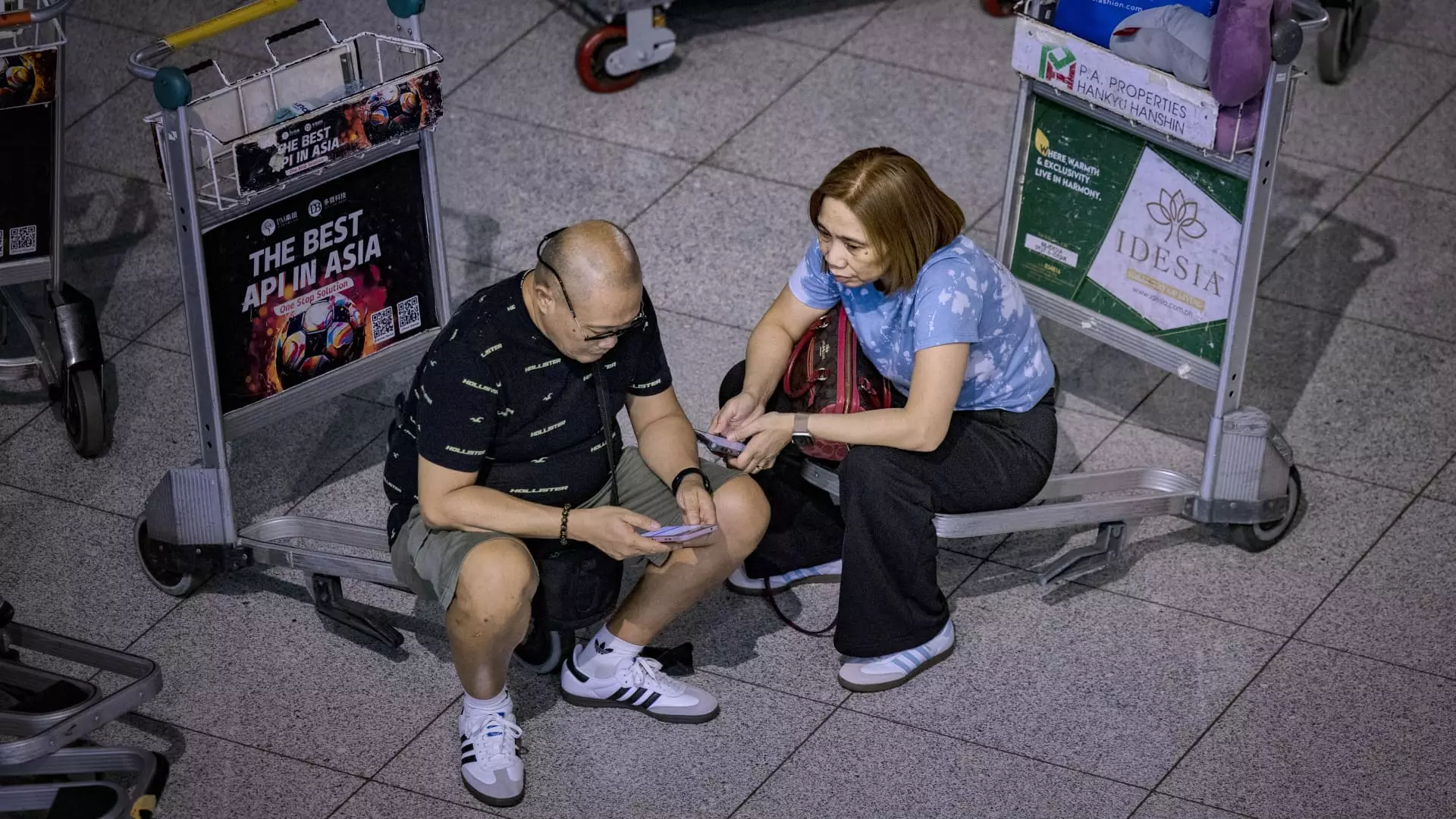The IT outage that occurred recently caused chaos in the aviation industry worldwide. Several airlines had to halt their flights, while others warned passengers of delays and disruptions in services. The impact of this unprecedented event was felt globally, affecting not only the airlines themselves but also the passengers who were left stranded at airports.
The disruption caused flight update and check-in monitors at airports around the world to display the dreaded “blue screen of death,” indicating a Microsoft system error. This led to confusion among passengers, with some airports resorting to manual processes such as whiteboards to display flight updates. The chaos was evident at Belfast International Airport, where handwritten boarding passes were issued due to the outage.
Ripple Effect Across Industries
The outage not only affected individual users but also large institutions such as banks, stock exchanges, and central banks. Operations were paralyzed during the peak holiday season, causing chaos across various sectors. According to market analysts, this was the first time a real global blackout of this magnitude had been experienced. The ripple effect of the disruption was felt far and wide, highlighting the vulnerability of our increasingly interconnected world.
Airlines across Europe, the Middle East, the Americas, and Asia were forced to issue updates outlining the extent of the impact on their flight schedules and services. Passengers were advised to check their flight status, as several airlines requested assistance from the Federal Aviation Administration to ground their fleets. American, Delta, and United were among the major carriers that experienced disruptions, leading to delays, cancellations, and changes in travel plans. The chaos brought about by the outage left passengers frustrated and exhausted, with uncertainty about the status of their flights.
Airlines such as KLM, Air France, Lufthansa, and Eurowings had to suspend or cancel flights due to the outage, leading to widespread chaos and confusion among passengers. The disruption made it impossible to handle flights, forcing airlines to advise passengers not to come to the airport unless their flights were departing or significantly delayed. The struggle to resume operations continued throughout the day, with airlines facing logistical challenges in managing the backlog of flights.
Airport Systems Down
Airports worldwide were affected by the IT outage, with systems such as self-check-in and baggage drop facilities not functioning properly. Passengers had to endure long lines and manual processes to check-in for their flights, leading to delays and frustration. Air navigation service providers also had to reduce traffic capacity as a precautionary measure, further complicating the situation. The busiest day of flight departures of the year was marred by cancellations and delays, disrupting travel plans for thousands of passengers.
Lessons Learned
The global IT outage served as a wake-up call for the aviation industry and other sectors reliant on technology. It highlighted the vulnerabilities of interconnected systems and the need for robust backup plans in case of such disruptions. Airlines, airports, and other organizations must reevaluate their reliance on technology and ensure that they have contingency measures in place to deal with unforeseen events. The chaos caused by the outage should serve as a lesson for the future, prompting a reevaluation of our dependence on technology in critical industries.


Leave a Reply